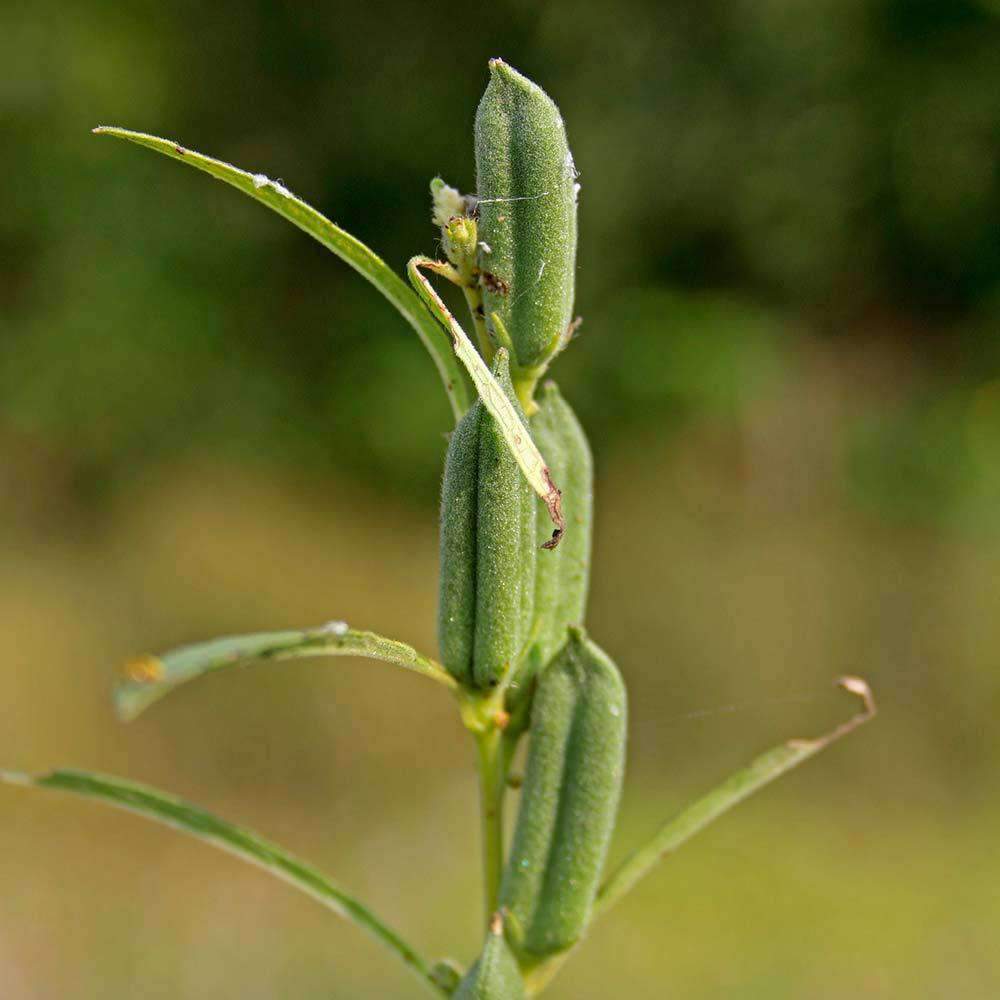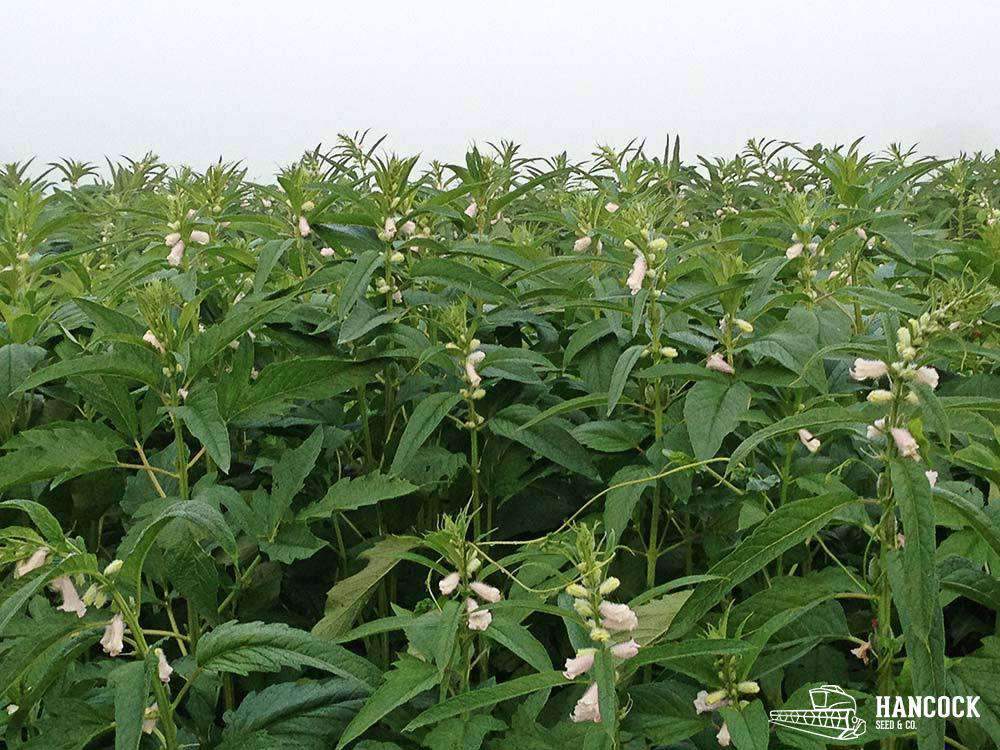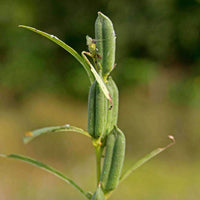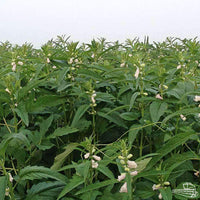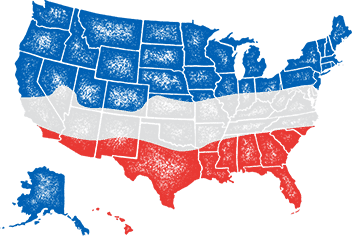
- When to plant:
- Spring, Summer
- Fertilizer:
- Varies
- Seeding rate:
- 6 lbs. per acre
- Overseeding rate:
- 1/8 lb. per 1.000 sq.feet
- Seeding depth:
- 1/4 - 1/2 inch
- Ideal ph:
- 5.0 - 8.0
- Gmo:
- No
- Inoculant needed:
- No
- Coated or raw:
- Raw
- Lifecycle:
- Annual
- Climate zones:
- Transition Zone, Warm Season
Sesame Seed, much like some varieties of Sunflower Seed, scatters oily seeds in great quantities. This attracts a number of game birds, but quail are especially fond of this option.
Product Information
- Application or Use: Food Plot, Cover Crop
- Germination Time: 7 - 14 days, under optimal conditions
- Growing Locations: Warm Season, Transition Zone
- Height: 3 - 5 feet feet
- Sunlight Requirements: 8+ hours, full sun for best results
- Advantages: Used primarily for game birds due to scattering of oily seeds in great quantities.
- When to Plant: Recommended planting time is spring and summer when night time temperatures are consistently 65+ degrees.
Product Detail
- Untreated seed
- Attracts game birds
- Non GMO
- Well drained soil
- Drought tolerant
Product Information
Sesame seed, or Benne, is a tall-growing, annual seeding crop that will achieve 3 to 5 feet in height at maturity. Sesame is commonly used for quail or dove fields, exotic bird feed, duck plots, food plots, and game bird attractants. After blooming, the Sesame seed pods will scatter oily seeds in great quantity for all game birds, especially quail. Seed production will occur in approximately 90 days after emergence.
Sesame seed is best for those looking to attract turkey, duck, dove, pheasant, rabbit, and quail.
*Product packaging may appear different than what is pictured.
Plant at a rate of 6 lbs. per acre, or 1/8 lb. per 1,000 sq. ft., at a depth between 1/4 in. and 1/2 in. Plant during spring-summer. Seed production will occur in about 90 days after emergence.
When choosing to start a new lawn, remove old vegetation by using a de-thatcher, power rake or tiller to kill the existing vegetation. Rake or drag the area to remove debris and dead grass for a clean area. Ensure the soil is leveled and loosened to allow the seed to have good soil contact once spread on a clean seed bed.
If you have an area with heavy weed coverage, we recommend starting fresh by killing and removing the existing vegetation. If you choose to use chemicals, herbicides or fertilizers, you must check with the product's manufacturer prior to planting new seed to ensure the proper waiting period.
When overseeding an existing area, mow your lawn at the lowest setting and bag the clippingsx. Rake or drag any areas that have dead thatch or debris.

Seed Quality
Hancock Seed is dedicated to delivering the best seeds possible to our customers. Hancock Seed grows and harvests many of our products, and we acquire the majority of the rest from other family farmers.
All these seeds are processed, packaged and shipped from Hancock Farm. This helps us ensure that our high standards are met. Unlike much of the competition, we refuse to sell you a seed that was not gathered during the last harvest. You will always receive fresh product from Hancock.
Every seed we grow comes with 40 years of experience behind it...you can rest assured that all of our products are cultivated in a method that assures its potential for growth.
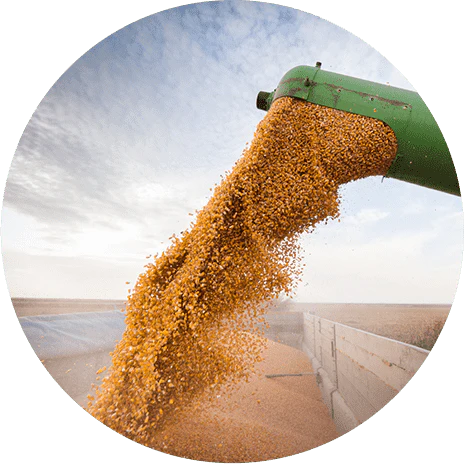
Your cart ( 0 )

Sesame Seed, much like some varieties of Sunflower Seed, scatters oily seeds in great quantities. This attracts a number of game birds, but quail are especially fond of this option.
Product Information
- Application or Use: Food Plot, Cover Crop
- Germination Time: 7 - 14 days, under optimal conditions
- Growing Locations: Warm Season, Transition Zone
- Height: 3 - 5 feet feet
- Sunlight Requirements: 8+ hours, full sun for best results
- Advantages: Used primarily for game birds due to scattering of oily seeds in great quantities.
- When to Plant: Recommended planting time is spring and summer when night time temperatures are consistently 65+ degrees.
Product Detail
- Untreated seed
- Attracts game birds
- Non GMO
- Well drained soil
- Drought tolerant
Product Information
Sesame seed, or Benne, is a tall-growing, annual seeding crop that will achieve 3 to 5 feet in height at maturity. Sesame is commonly used for quail or dove fields, exotic bird feed, duck plots, food plots, and game bird attractants. After blooming, the Sesame seed pods will scatter oily seeds in great quantity for all game birds, especially quail. Seed production will occur in approximately 90 days after emergence.
Sesame seed is best for those looking to attract turkey, duck, dove, pheasant, rabbit, and quail.
*Product packaging may appear different than what is pictured.
Plant at a rate of 6 lbs. per acre, or 1/8 lb. per 1,000 sq. ft., at a depth between 1/4 in. and 1/2 in. Plant during spring-summer. Seed production will occur in about 90 days after emergence.
Instructions
When choosing to start a new lawn, remove old vegetation by using a de-thatcher, power rake or tiller to kill the existing vegetation. Rake or drag the area to remove debris and dead grass for a clean area. Ensure the soil is leveled and loosened to allow the seed to have good soil contact once spread on a clean seed bed.
If you have an area with heavy weed coverage, we recommend starting fresh by killing and removing the existing vegetation. If you choose to use chemicals, herbicides or fertilizers, you must check with the product's manufacturer prior to planting new seed to ensure the proper waiting period.
When overseeding an existing area, mow your lawn at the lowest setting and bag the clippingsx. Rake or drag any areas that have dead thatch or debris.















